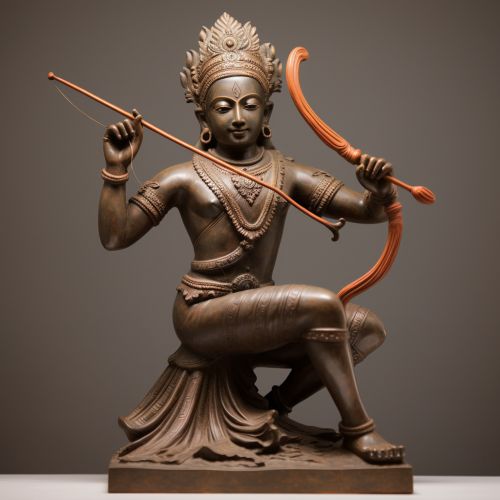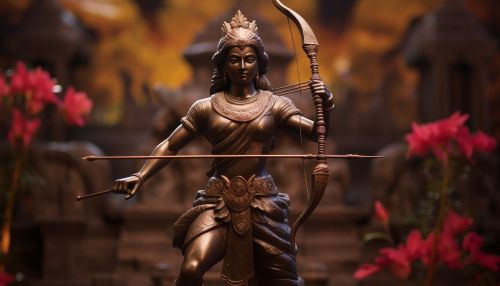Lava (Ramayana)
Origins and Etymology
The term "Lava" in the context of the Indian epic Ramayana refers to one of the twin sons of Lord Rama and his wife Sita. The name "Lava" is derived from the Sanskrit word "लव" which translates to "a small fragment" or "portion". This is symbolic of Lava's role in the epic, as he is a fragment of his father, Lord Rama.
Birth and Early Life
Lava and his twin brother Kusha were born to Sita during her exile in the forest. The twins were born under the care of the sage Valmiki, who is also the author of the Ramayana. Lava and Kusha were trained in military skills and the knowledge of the Vedas by Valmiki himself.
Role in the Ramayana
Lava plays a significant role in the latter part of the Ramayana. He and his brother Kusha are known for their bravery and skill in warfare. The twins famously tie up the horse of the Ashvamedha Yagna, a ritual performed by their father Rama, unknowingly challenging him to a battle. In the ensuing battle, they manage to hold their own against the entire army of Ayodhya, showcasing their prowess.
Legacy
Lava is believed to be the founder of the city of Lahore, which is named after him. He is also worshipped as a deity in some parts of India. The legacy of Lava and his brother Kusha is celebrated in various forms of Indian art and culture, including literature, dance, and music.


